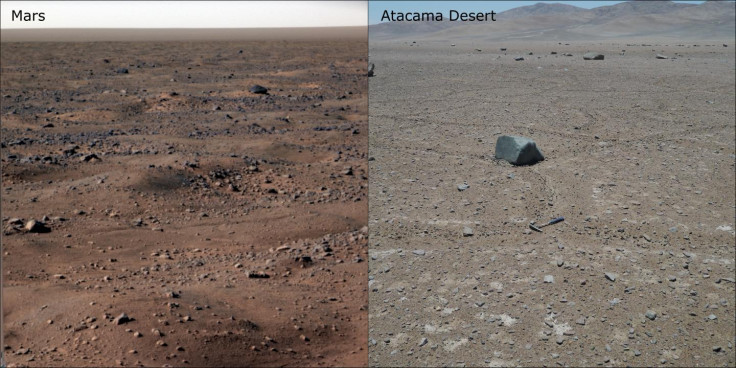Can life exist beneath the Martian surface? 'Weird' microbes found in Mars-like conditions could provide answers
Dormant subsurface microbes found on Earth could be present on the Red Planet as well.

A group of scientists have found hidden microbial activity in an arid region of South America, a place so similar to Mars that many believe that the Red Planet may host some form of hidden microbial life as well.
The Atacama Desert is one of the driest places on planet Earth. It passes decades with little to no rainfall and is frequently exposed to dry winds. However, despite the extreme conditions, scientists from Washington State University were able to find active microbes under the desert's salty surface.
Till date, it was thought that the microbes in the desert were long dead or were slowly dying. However, the group – led by planetary scientist Dirk Schulze-Makuch – found strains of bacteria, fungi and other microorganisms which very much were alive and had adapted to the harsh conditions, National Geographic reported.
The microbes, which were found a few metres under the surface, have a unique 'trick'. They go into a dormant or inactive stage while bearing extreme UV radiation without water and come back to life as and when it rains.
"In the past, researchers have found dying organisms near the surface and remnants of DNA, but this is really the first time that anyone has been able to identify a persistent form of life living in the soil of the Atacama Desert," Schulze-Makuch said.
The group made the find after witnessing a sudden explosion of biological activity on a rainy day. In 2015, they saw the microbes going active due to the impact of moisture and over the next two years, they saw how these organisms reverted back into dormancy.
"We believe these microbial communities can lay dormant for hundreds or even thousands of years in conditions very similar to what you would find on a planet like Mars and then come back to life when it rains," he added.
When Mars dried up billions of years ago, life might have gone silent in a similar fashion by lying dormant under the surface and waiting to be discovered, the researcher suggested by hinting at the presence of dormant subsurface microbes on the Red Planet.
"We know there is water frozen in the Martian soil and recent research strongly suggests nightly snowfalls and other increased moisture events near the surface," Schulze-Makuch added.
To expand the search for living microbes surviving in harsh Mars-like conditions, the group also plans to explore Don Juan Pond, an Antarctic lake that is so salty, it stays liquid even at extremely low temperatures.
"Our goal is to understand how they are able to do it [survive] so we will know what to look for on the Martian surface," he said.
Their work has been published in the journal PNAS.






















